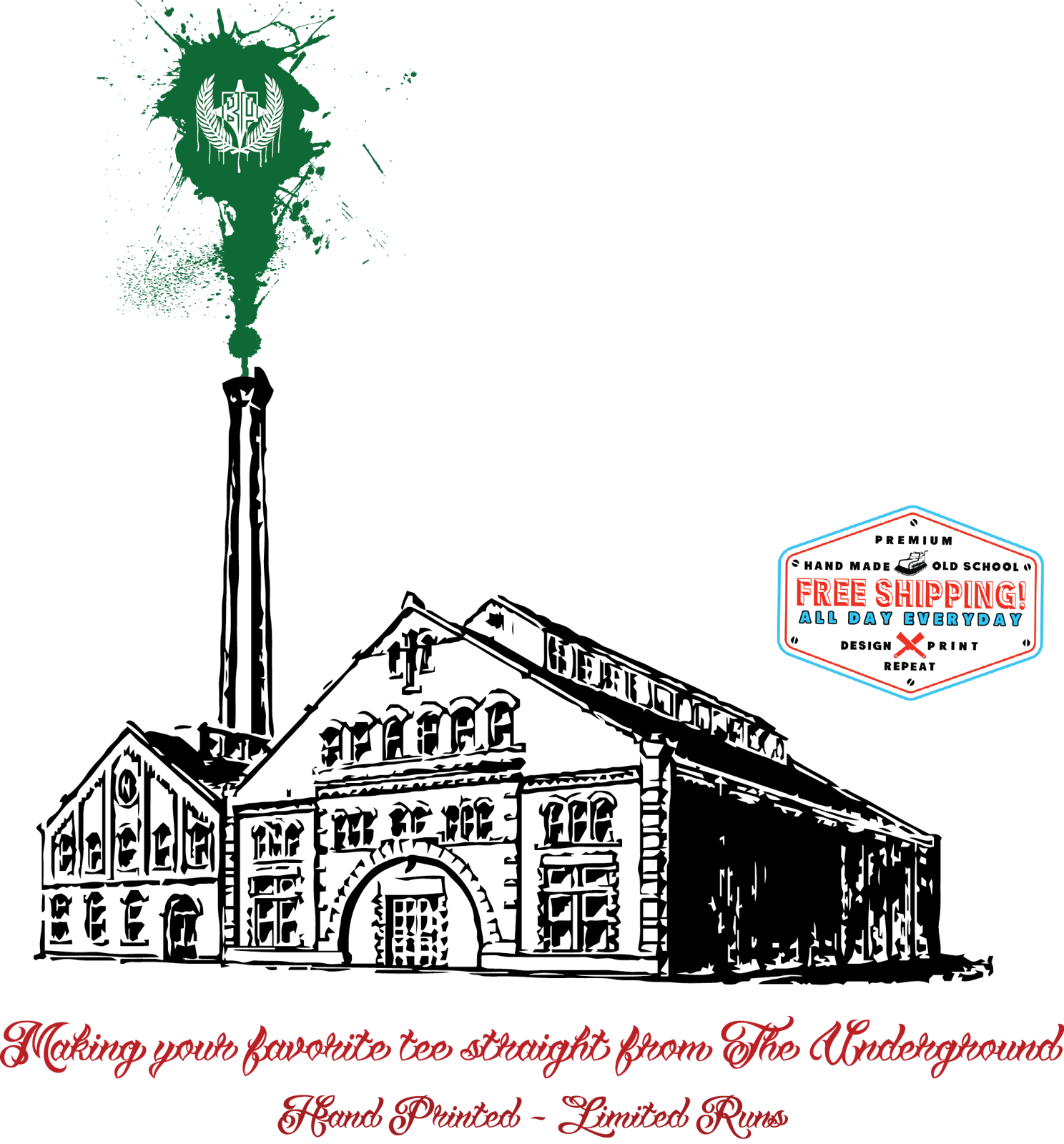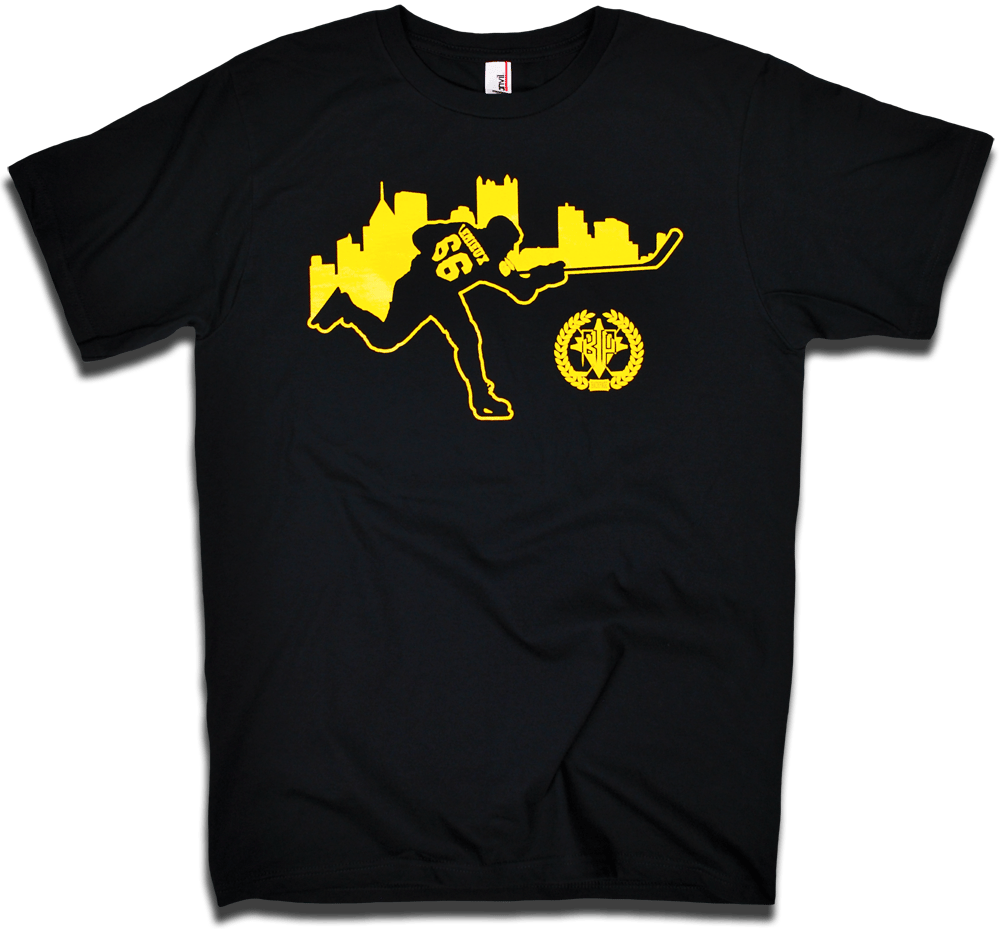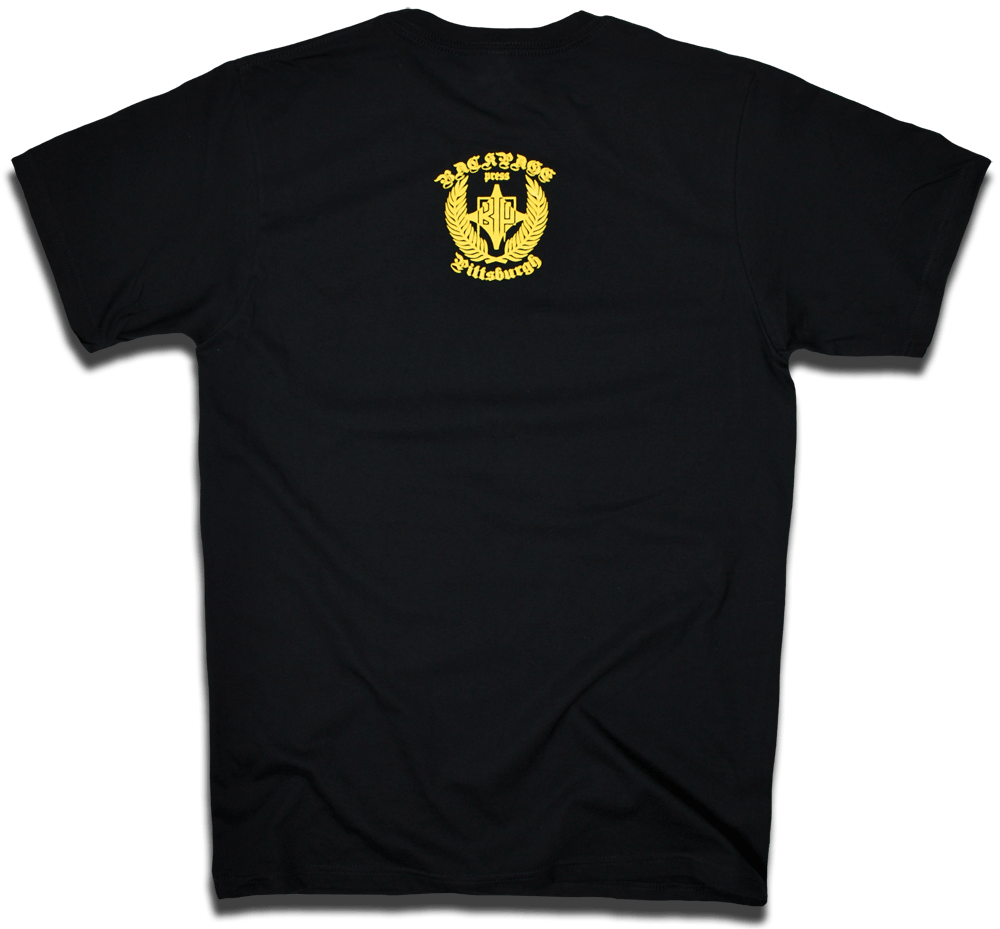"Adopted Son" tee by Backpage Press
$25.00
By 1998, I had realized Mario Lemieux was not just a hockey player, but a model of loyalty, perseverance, and strength. He was Pittsburgh’s sacred, adopted son.
Yet contract squabbles meant Mario wasn't exactly thrilled to come to Pittsburgh as a first-round pick. Mario wanted an annual payment of a million dollars in each of the first three years, guaranteed. The Penguins where offering just under that, and an agreement that was suitable to both parties was not met by draft day. When Mario’s name was called, he defied hockey tradition and refused to walk to the podium or to don a Penguins jersey. Because of Mario’s actions, justified or not, many writers and critics described him as an arrogant, spoiled brat. One enraged writer was quoted as saying, “A tasteless demonstration of bad manners, unmatched by anything I’ve ever seen.” It would be the last time anyone from Pittsburgh ever had reason to criticize Lemieux.
Mario's popularity and skill saved the hockey franchise from impending financial doom in 1984, and as the decade wore on, he inspired a mad love affair between Pittsburgh and the sport of hockey. Fans filled the Civic Arena like never before, and the Steel City truly became a three-sport town.
We watched the Penguins slowly become contenders, stockpile skilled players, and then win a Stanley Cup, something that was incomprehensible before Lemieux's arrival. That 1991 season is scorched into my brain. I remember the stunning displays 66 performed, including the now legendary goal against Jon Casey in Game Two of the Stanley Cup Finals. I remember the moment Mike Lange stated the Pittsburgh Penguins were indeed Stanley Cup champs, and I remember running out the back door, arms in the air, exclaiming to my father and Mr. Terza that the Penguins had won the Stanley Cup! Dear Lord! How people where not rioting in the streets was beyond me. My dad looked at Mr. Terza, then to me, and said, “That’s good.”
At that moment, I knew two things: Mario’s magic had not yet charmed everyone in Pennsylvania, and my father was without a soul.
The Penguins tore through the NHL, with star players like Ron Francis, Jaromir Jagr, Kevin Stevens, Rick Tocchet, and Larry Murphy providing Mario with the supporting cast he never had. But in early 1993, it all came crashing down. Even the best hockey player in the world was not immune to the most sobering trials and tribulations life had to offer. Lemieux announced he had Hodgkin’s lymphoma and underwent immediate chemotherapy. And on the day of his last treatment, Mario played a game in the most unholy of unholy hockey cities… Philadelphia.
Of course the notoriously classless Philly fans booed Mario, right? No, not at all. They gave him a standing ovation. Damn them. If they would of booed the greatest, my hate could be pure; but now I have to give them a pat on the back and put words together that should never be spoken: Philadelphia was pretty classy that day.
Constant back trouble and his ongoing cancer recovery forced Mario into retirement in 1997. His last game was played before a sellout crowd in the Philadelphia Spectrum, and he received another standing ovation. Damn it.
A few months after retirement, Mario was inducted into the Hockey Hall of Fame, becoming the ninth player in history to have the mandatory three-year waiting period waived.
However, in my opinion, what shot Mario into the stratosphere of legend is what happened next.
During the early ‘90s, the Pens were grossly mismanaged. Money was simply thrown at talent. Those free-spending ways brought two Stanley Cups but left the franchise over $90 million in debt. Some high-priced stars, including Mario, were asked to defer their salaries to help keep the team afloat. Dumping other high-profile players attempted to stop the bleeding, but the ploy ultimately backfired. In 1998, the Pittsburgh Penguins declared bankruptcy.
In an unprecedented move, Lemieux, who was owed more than $30 million dollars by the Pens, proposed he recover this money by converting it into equity and buying the franchise. He also promised to keep the team in Pittsburgh. Lemieux later said he would have put in a bid even if he had not been owed the deferred salary. The NHL's Board of Governors approved his application for ownership on September 1, 1999. This made the then-retired star the first former NHL player to become majority owner of his former team. Lemieux assumed the position of Chairman of the Board, President, and Chief Executive Officer of the Pittsburgh Penguins.
In what many Pittsburghers describe as one of the most electrifying and unbelievable moments ever, Mario returned to the NHL ice on December 27, 2000. Mario would play the dual role of star forward and owner, a unique position to say the least.
Unfortunately, due to the timing of the comeback, Mario would have to wear my most hated Penguins jersey, the one often referred to as the “pajama jersey.” Get on your Google machine and look it up. Make sure and have a punching pillow and barf bag ready.
Luckily, this fashion disaster did not tarnish his career.
One would think this is all one man can do for a sports team and a city. If you think that, then you must not know Lemieux.
By 2004, the NHL entered a lockout, which threatened to end the Penguins and severely damage the league. Rumors surfaced the team was in danger of moving again, this time to Kansas City. I remember the subsequent fire sale of Pens gear in Pittsburgh, which is when I was able to pick up my first authentic Lemieux jersey at a reasonable price. I was of course happy to finally own an authentic jersey, but it made me think the team was finally a goner. And what a horrible feeling it was.
Enter Sidney Crosby. Somehow, someway, the Pens won the draft lottery in the resurrected 2005 NHL and snagged the most highly touted hockey player in history. Mario graciously opened his home to the18-year-old Crosby. The Kansas City deal was off. Mario did visit Kansas City, but he later said the trip was only to scare Pittsburgh officials into a new arena deal and lease with the team. It worked. Mario’s management tactics and leadership where crucial in obtaining funds for what would be the Consol Energy Center and a 30-year lease between the team and the city. Mario would play one year with Sid the Kid before retiring for the second and final time.
He has now saved the Pittsburgh Penguins from demise three different times in 20 years. Beat that, Wayne.
On June 12th, 2009, Lemieux won his third Stanley Cup, this time as an owner.
This French-Canadian has truly carried Pittsburgh on his back.
* This design is printed on Anvil ring spun cotton tees. These tees are incredibly soft, comfortable, and flexible. They have a sliming cut, but not enough that it throws off the sizing. Bottom line, these tees will be among your go-to favorite tees.
For more detailed information, including sizing, check them out at Anvils website:
http://www.anvilknitwear.com/Product-Catalogs/Tees/980
Availability
-
SMALL
-
XL
-
2XL



